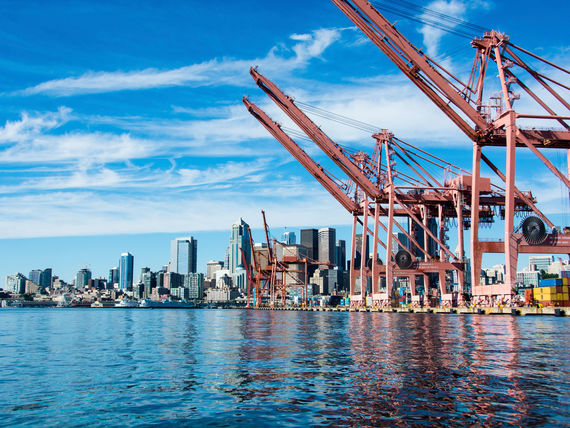BDP Trendwatch: Southern California’s container ship backup ends; Split decision: Unions for railroad engineers and conductors take different routes in freight rail contract ratification vote; Νew IMO regulations to support container freight market recovery

Southern California’s container ship backup ends
Officials declared an end to the backup of ships at Southern California’s ports more than two years after vessels began lining up in weekslong queues that became one of the most visible signs in the U.S. of the pandemic-driven turmoil in supply chains.
The Marine Exchange of Southern California said Tuesday the backup at the neighboring ports of Los Angeles and Long Beach that climbed to a high of 109 vessels in January had fallen to zero.
Split decision: Unions for railroad engineers and conductors take different routes in freight rail contract ratification vote
Voting concluded midnight Sunday for members of the Brotherhood of Locomotive Engineers and Trainmen as well as the Transportation Division of the International Association of Sheet Metal, Air, Rail, and Transportation Workers on proposed new five-year collective bargaining agreements with the nation’s Class I railroads. BLET members voted to accept a tentative agreement reached on September 15; SMART-TD train and engine service members have voted to reject their proposed contract, while SMART-TD yardmaster members voted to accept. BLET and SMART-TD are the two largest rail unions, accounting for half of the unionized workforce on the nation’s largest freight railroads.
Νew IMO regulations to support container freight market recovery
The limited increase in ship supply driven by the new International Maritime Organization (IMO) regulations is expected to contribute to the recovery of the shipping freight market in the medium and long term, according to S&P Global Market Intelligence.
The analysis shows that while freight rates are expected to return to the pre-pandemic level in 2023, limited active supply growth driven by regulations (demolitions and speed) will likely help the market to recover from 2024 onwards.
California looks to ban diesel trucks at ports by 2035
An ambitious California plan to require trucking fleets in the state to switch from diesel to electric power faces a potential backup at charging stations.
The California Air Resources Board is proposing phasing out older big rigs operating in the busy corridors shuttling shipping containers between ports, rail yards and warehouses and require that all new vehicles be powered by clean fuels starting in 2024. From 2025, the state would bar trucks powered by internal combustion engines that have more than 800,000 miles on them from operating at ports and rail yards.
The goal is to push more than 30,000 heavily-polluting trucks to clean energy by 2035. Trucking industry officials say there is a big gap between the target and the charging infrastructure that barely exists today and would take years to build.
Gothenburg port involved in three shipping decarbonisation projects selected by Sweden
Three Port of Gothenburg projects for a green transformation of the shipping industry have been selected by the Swedish government to constitute the country's contribution to the international initiative Green Shipping Challenge.
The initiative is led by the United States and Norway and was launched earlier this week at the COP27 climate summit in Sharm-el-Sheikh, Egypt.
Second terminal planned in Port Said
General Authority for the Suez Canal Economic Zone (SCZONE) and Suez Canal Container Terminal (SCCT) have unveiled their plans to design and operate a second terminal at Port Said East Port.
The terminal will be installed between SCZONE and the existing SCCT area.
The targeted additional volume after the expansion will reach 2 million TEUs, according to Steven Yoogalingam, CEO and managing director of SCCT.
German and French ports launch new hydrogen import projects
Efforts are continuing to build partnerships with European ports to develop the supply of hydrogen for future fuels. In Germany, Hamburg announced plans for the country’s first large-scale green energy import facility linked with the existing facilities in the port, while in France the Nantes – Saint Nazaire Port is part of a project designed to support large-scale green hydrogen production facilities to provide fuel for the energy transition in the Loire Valley.


